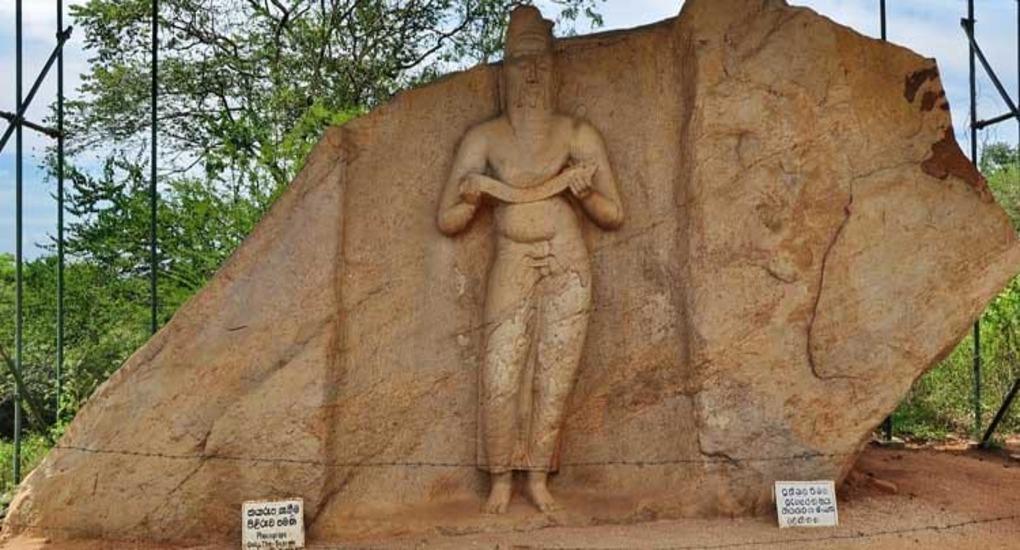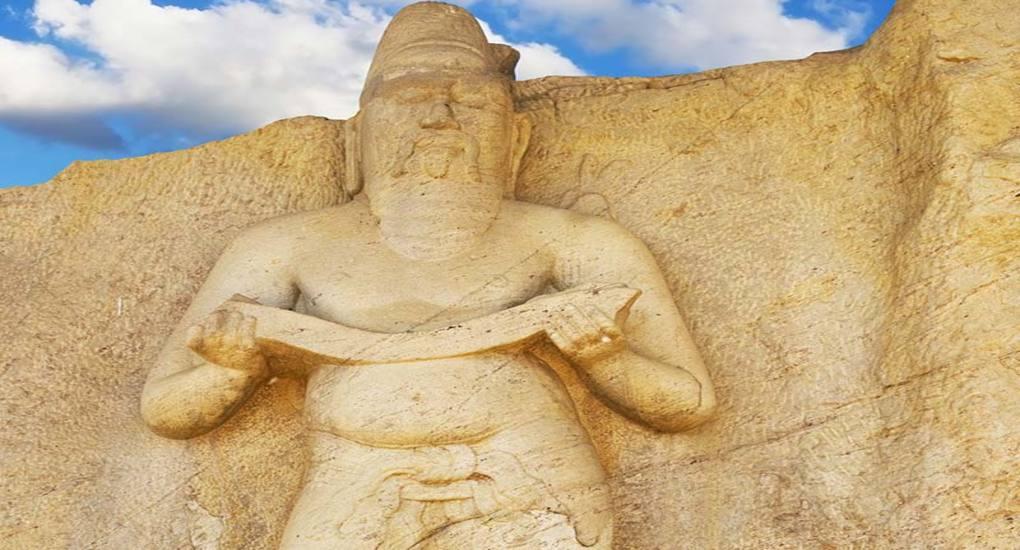Points of Interest - Polonnaruwa
Parakramabahu Statue
Bordering the Parakramabahu Lake is the statue, believed to be of King Parakramabahu, dating back to the Polonnaruwa period of ancient Sri Lanka, demonstrating the great architectural aptitude of ancient times. The 11ft 2in. height statue portrays a strong male figure, holding an Ola Leaves book (Pus Kola) in a grandeur manner. Next to the statue, sits the Potgul Vehera (library) a small circular structure believed to have been either a library or a lecture theatre.
Built presumably during the 12th century, during the reign of Parakramabahu I, this statue is considered to be one of the best stone sculptures belonging to the Polonnaruwa period. A popular belief is of it being the statue of King Parakramabahu (1153- 1186), it is also believed that this is a sculpture of an Indian high priest (likely "Kapila" of "Pulasthi"). The long beard and the mustache, the hair, the clothing, and the body with a slightly large stomach are not what you would expect from a statue of a great king.
This is quite a beautiful and unique sculpture displaying high levels of craftsmanship of the rock carving specialists of that time, regardless of whom it represents.
Its chest area is exposed aside from a solitary string worn over the left shoulder. A long object, which is assumed to be an Ola (cured palm leaves) book is held in the hands. The sculpture's face conveys a grave appearance, with eyes half shut, a high temple, a long beard and a mustache. The shoulders of the sculpture are rounded, depicting an "extraordinary strength". The right leg relaxed with the right knee bent slightly forward. While the hip is also inclined to the left, the weight of the body is carried by the left leg. The sculpture is "the very exemplification of solidarity, greatness and nobility", according to Senarath Paranavitana, the archaeologist.
This sculpture can be reached by travelling approximately 1 ½ kilometers along the Parakrama Samudraya dam. There is a little unidentified and wrecked Chethya closer to this sculpture. It is believed by some that it is the cemetery of lord Parakramabahu and this stupa holds the remaining parts of the ruler.
The ancient city of Polonnaruwa, the second capital of Sri Lanka after the destruction of Anuradhapura in 993, is definitely worth a visit with its ancient Sri Lankan inspirational sculptures. Besides the Brahmanic monuments built by the Cholas, the ancient city also comprises of the monumental ruins of the fabulous garden-city created by Parakramabahu I.

